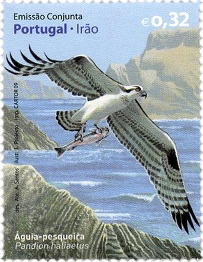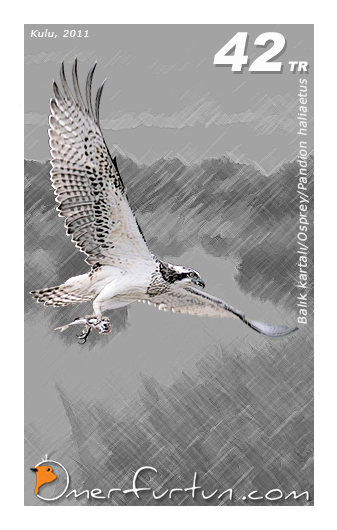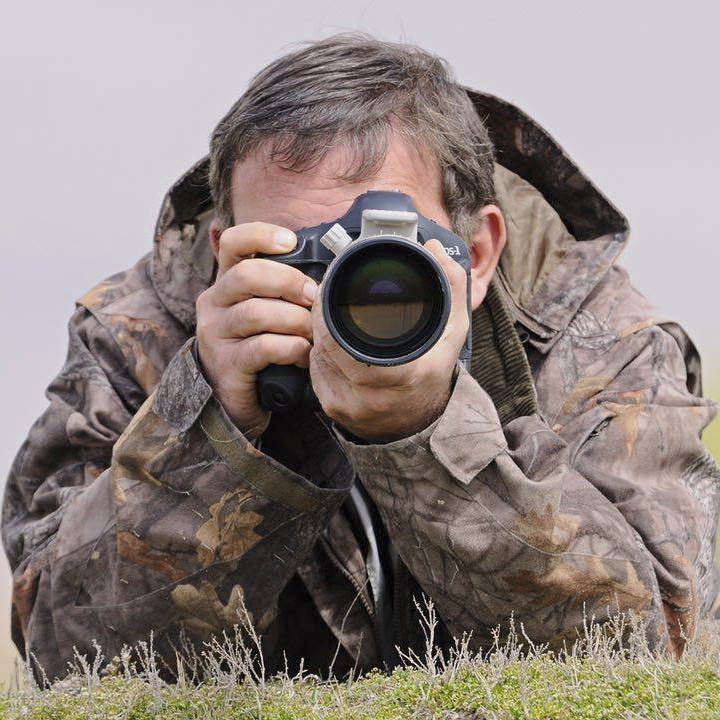Stamps and Birds: The Osprey
While building a bird-themed stamp collection, I started digitizing my stamps to create a database that I could carry with me at all times—allowing me to check which stamps I already had and which ones were missing. So far, I’ve entered around 800 stamps and continue adding more whenever I get the chance. Though details like country and species are still incomplete, I decided to share this data with everyone and compiled it on a website: PulBul
Searching for all the stamps ever issued featuring a bird species might not be as thrilling as searching for the bird itself in the wild, but it is still a rewarding pursuit. Just as a bird photographer eagerly awaits migration seasons, scours the field for birds, and feels the excitement of capturing the perfect shot, a philatelist with a bird-themed collection follows emission programs, waits for new bird stamps to be released, and experiences the same thrill when adding a newly issued stamp to their collection.
Studying stamps teaches you about a country's nature, history, geography, economy, famous figures, cultural treasures, social life, and traditions. When your theme is "birds," you also gain knowledge about different species, their characteristics, habitats, and feeding behaviors.
Much like in bird photography, stamp collecting fosters valuable friendships and a sense of friendly competition within collector communities. The expression on a philatelist's face when showing a stamp they know you don’t have is remarkably similar to the look a photographer gives when showing a photo of a bird you’ve never captured.
Before I started bird photography, my stamp collection was generally animal-themed, but now it focuses solely on birds. Tracking the approximately 10,000 bird species in the world and investing in every related stamp is no easy feat. So, I narrowed my theme to include all stamps featuring bird species found on my country's official bird list—regardless of which country issued them. Since stamps are usually released in series, my collection sometimes includes species that don’t occur in my country as well.

For the theme of this article, I have chosen the Osprey stamps from my collection. The Osprey is a widespread species and holds a significant place in the wildlife, mythology, and folklore of many countries. As a result, it is one of the most frequently featured species among bird-themed stamps.

Polish stamps have always been captivating in terms of artistic value. The Osprey series shown above is among my favorite stamps in the collection. In the bottom left corner, you can see the WWF (World Wildlife Fund) logo. WWF has issued nearly 2,000 nature conservation-themed stamps across various countries. The illustrations are by Polish artist Jacek Brodowski.
On the left, there is a joint-issue stamp from Portugal and Iraq, illustrated by José Projecto. This series consists of two stamps, with the other featuring the White-tailed Eagle, which I will share in future articles. You will often come across the name José Projecto, a skilled illustrator known for his bird-themed works.
The Swedish stamp below was illustrated by Martin Mörck, who also included the Black-tailed Godwit, Common Teal, and Great Snipe in a four-stamp series. The portrait of the Osprey on the U.S. stamp was drawn by illustrator Robert Giusti, with the stamp design by art director Howard E. Paine. The five-stamp series also includes the Peregrine Falcon, Golden Eagle, Northern Harrier, and Northern Goshawk.
The Saint Vincent stamp highlights the Osprey’s widespread fame, reaching even the Caribbean.

The term "Artistamp," used for specially made stamps that have no validity for postal use, is derived from the English words "artist" and "stamp." In 1982, Canadian graphic artist and philatelist T. Michael Bidner compiled a catalog of artistic stamps created up to that time. The word "Artistamp" first appeared in this catalog and was soon adopted by envelope and stamp designers.
While early examples were created using stamping or hand-painting techniques, advancements in technology and the convenience of digital platforms have led to the dominance of custom stamps designed using graphic software in recent years.

Above, you can see the custom stamps I created using Photoshop with one of my osprey photographs. In the stamp on the left, no alterations were made to the original photo—only additions were made to give it a stamp-like appearance. In the ones on the right and below, the background has been changed, and a slight drawing effect has been applied to the osprey. Instead of a standard stamp denomination, the license plate number of the province where the photograph was taken has been used.

You can choose to keep your custom stamps in a digital format if you prefer. Recently, portals promoting "cyberstamp" collections—where you digitally store and organize postage stamp images—have emerged, claiming to offer an enjoyable way to engage in stamp collecting online.
Printing your custom stamps and compiling them in a stamp album, however, is a different kind of pleasure. You can print stamps using digital printers, but perforation and gumming require additional effort. Unfortunately, there is no home-use machine readily available for perforating stamps. While antique perforation machines can be imported from abroad, they are quite expensive.
As more enthusiasts take an interest in creating custom stamps, the hobby will become even more enjoyable for collectors. Personally, rather than chasing a stamp of a bird species issued in Gambia, I would prefer to collect stamps—regardless of philatelic value—designed using high-quality bird photographs taken by bird photographers in my own country.
Visit PulBul to discover birds with stamps.



